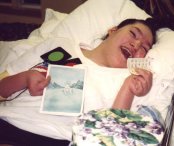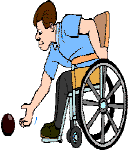The Cerebral Palsy Network
Around CPN
Resource
Center
Spasticity refers to the inability of a muscle to relax, while athetosis refers to an inability to control the movement of a muscle. Infants who at first are refers to the inability of a muscle to relax, while athetosis refers to an inability to control the movement of a muscle. Infants who at first are hypotonic, or very floppy, may latter develop Spasticity. Hemiplegia is cerebral palsy that involves one arm and one leg on the same side of the body, whereas diplegia primarily involves both legs. Quadriplegia refers to a pattern involving all four extremities as well as trunk and neck muscles.
Generally a child with quadriplegia does not walk independently. Another frequently used classification is ataxia, which refers to balance and coordination problems.
Although almost all children with cerebral palsy can be classified as having Hemiplegia, diplegia, or quadriplegia, there are significant overlaps that have led to the use of additional terms, some of which are confusing. Occasionally you'll encounter terms like paraplegia, double Hemiplegia, triplegia, and pentaplegia; these classifications are also based on the parts of the body involved.
By type of movement:
Spastic -- rigid
Athetoid -- no muscle control
Hypotonic -- floppy
Ataxic -- balance and coordination problems
Mixed
By involved body parts
Hemiplegia -- one arm and one leg on the same side of the body
Diplegia -- predominantly both legs (arms also involved)
Quadriplegia -- all four extremities
Other terms used to define specific problems of involvement or muscle function include dystonia, tremor,ballismus and rigidity. The words severe, moderate and mild are also often used in combination with both type of movement and involved body parts classification terms (severe spastic diplegia, for example), but these qualifying words do not have any specific meaning. They are subjective words, and their meaning varies depending upon the person who is using them.
This site designed & maintained by Mystic Dawn Web Creations. The Cerebral Palsy Networkę1997/2003. All graphics are the exclusive property of CPN, unless otherwise indicated. Contact CPN at Cerebral Palsy Network for further information.
Last updated 03/24/03

Amanda the reason CPN was
started
CPN
Reunion 2003

CP
Research
What's happening Today with
Cerebral Palsy

Special
Olympics
What's happening with
Special Olympics in 2003

CP
& Education
What's happening with
Special Need and Education in 2003